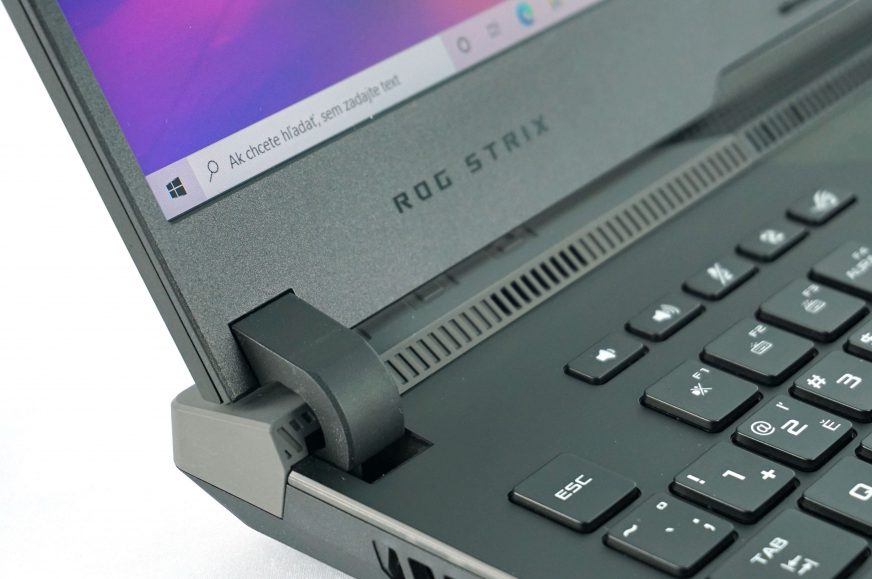Rendering and Geekbench
Asus has taken a very bold and quite surprising step this year with its gaming laptop portfolio. It switched extensively to Ryzen 5000 processors and combined them with the new GeForce RTX 3000 mobile graphics cards. The new ROG Strix SCAR 17 is thus the first look at a new stage of mobile gaming, in the highest configuration with 8-core processor and a 16-gigabyte RTX 3080.
Rendering, Geekbench
The SCAR 17 is the first notebook with the new generation Ryzen 5000 and RTX 3000 in our tests. It will be interesting to see how much performance the new components offer compared to many previous models, whether it is the Ryzen 4000 and Intel 10th generation or RTX 2000 and their Super versions. We will primarily compare it with the ROG Zephyrus Duo G14 and Legion 5/7i in the field of notebooks, but also with the HAL3000 Alfa Gamer Pro desktop, which has desktop versions of the new components.
Let’s start traditionally with Cinebench R15 for a first look at the raw performance of the processor. The 5800H surprises with its single-core performance, which beats all laptops tested so far. It beats the mobile Ryzen 4900HS and 4800H by 26 and 21% , but even Intel with the i7-10875H and i9-10980HK models is not enough and loses by 14%. The HAL3000 with the desktop 5600X is even 11% faster, but the domination of the new Ryzens is essential, which has so far only been a utopia in single-core tests. Multi-core no longer brings such a surprising result, as Ryzen could be expected to be at the forefront. The G14 thus lags behind by 33% and the recently tested Legion 5 with 4800H by 11%. Intel laptops also lag behind by 20–30%. The HAL3000 desktop also lags behind, as the 5600X is just a 6-core.
The newer Cinebench R20 shows practically identical results and thus the second place in the SC behind the HAL3000 AGP and also the second place in the MC behind the HAL3000 MČR 2020 Ultimate with a 12-core 3900X.
We do not yet have enough data in the new R23, but the table is filling up gradually. We can see that the single-core performance is a bit weaker than with the new Tiger Lake 11th generation processors, but the difference compared to the predecessor, the 4800H in Legion 5, is 13%. In multi-core, we already see the winning of SCAR 17 by 11% ahead of Legion.
Blender and POV-Ray practical tests show similarly good results due to high multi-core performance. In POV-Ray, the SCAR 17 took second place ahead of Legion 5 with a lead of 10% and beat the G14 by 32%. Intel laptops lag behind by 14–70%. In Blender, the Legion loses only by 5%, on the contrary, the loss of the G14 has increased even more, to 36%.
The single-core results in Geekbench 3–5 show a steady increase in performance against the Legion 5 with 4800H by 12/16/16% and compared to 4900HS in G14 by 14/19/18%. In multi-core, the Legion 5 is relatively close in performance with values of 1/7/-3%, so in GB5 it even beats the SCAR 17 by 3%. On the contrary, the G14 lags even more behind by 24/25/10% in multi-core tests.
GPU Compute tests show the first comparison of the RTX 3080 with the 2080 Super and 2070 Super. The Zephyrus Duo with the 2080S loses by 44/27%, the Legion 7i with 2070S by 51/61%. We will see if similar results are confirmed in games.
- Contents
- Specs and details
- Testing methodology
- Display tests
- Rendering and Geekbench
- 3D/PC Mark and Unigine Heaven/Superposition
- Gaming tests – dedicated GPU
- Encryption, encoding
- Memory and storage tests
- Heating and battery life
- Blender – CPU, CUDA and Optix tests
- Performance modes
- Utility app
- Conclusion











